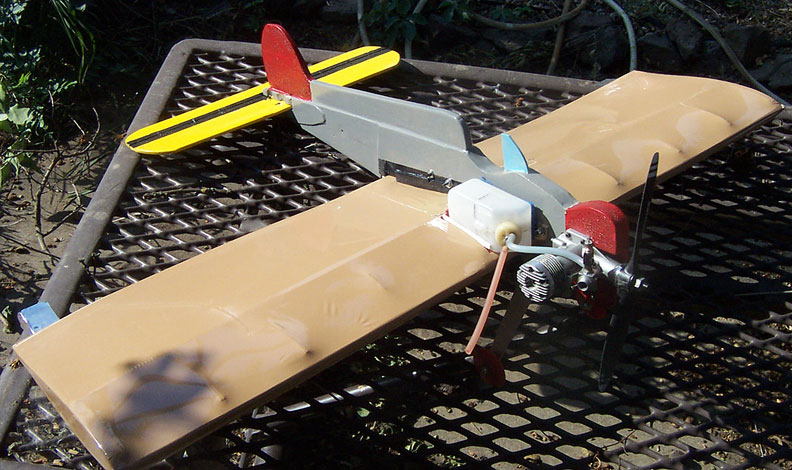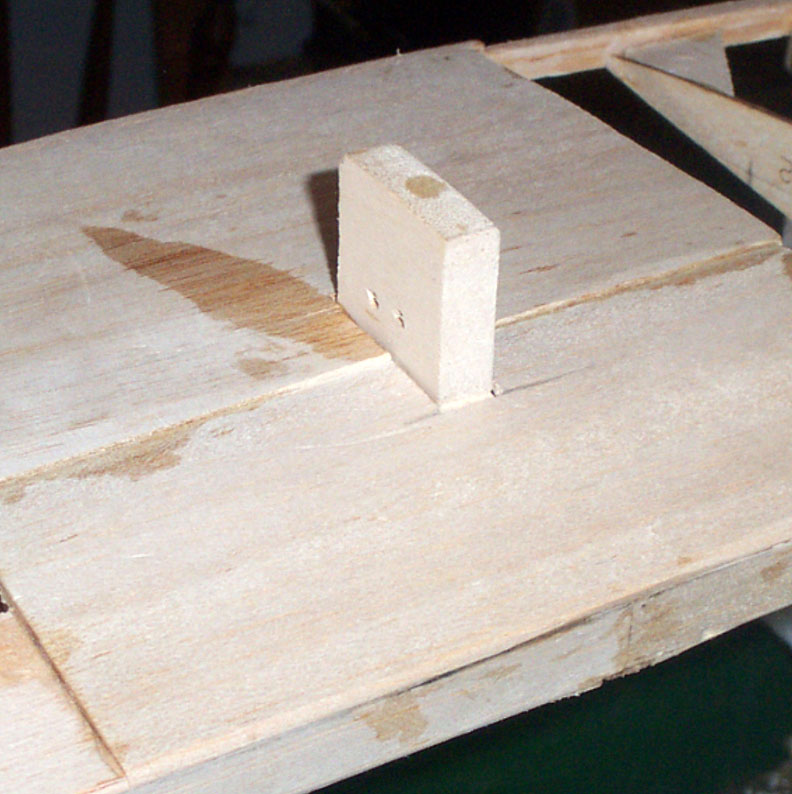
Joe Just's take-apart Profile Carrier plane, ready to fly. All photos by Joe Just.
A search for the 'Holy Grail'
(or how the heck can I build a take-apart plane without guidance, skill or ability)
By Joe Just
No need here to “reinvent the wheel” concerning why I wanted to build two Profile Carrier planes that I could take onboard my yearly flights to Pittsburgh, and then on to the Brodak Fly-In. Let me just say that after leaving that event this year I was determined to find a cheaper way of shipping planes. This is the beginning of that search.
After seeking some help on the Internet, I came up with the idea of using a center rib as the insertion part of the wing into the body. The wing is built around the Basswood center rib. Not a bad thought, so I have after three tries come up with the following. Here is what the center wing rib pattern looks like:
The center rib has a protrusion that fits into the cut away section of the fuselage. The body of the fuse is covered with extended plywood doublers, which in effect make a tight fit for the wings insertion.
After a good fit is assured, three holes then can be drilled through the body/center rib and using three machine screws, the wing can then be held together inside the body firmly, as shown next.
The stab and elevator can also be inserted into a slot cut into the rear fuse and can then be bolted into place as shown here on my first and initial attempt with this project.
At the bottom of the wing, the basswood center rib extends a portion to be used as a bell crank mount. As I use mostly some homemade three-line bellcranks, I use a simple aluminum 90 degree mount to fasten the bellcrank to this post.

Note the hardwood post which keeps the BC from revolving around back wards (that situation will make for yet another one-time flight experience unforgettable!)
All control systems are out in the open, and can be removed as the plane can be taken apart. While the wing is being built, all work on the body, such as landing gear and motor mount holes or whatever can be done ahead of time.
The picture at the top of the article is the first take-apart plane I built (and learned a bunch about this project as I went along with this experiment).I doubt this plane will ever be flown, but I will run the engine as shown to check on excess vibration, if any, problems that might come along as I start yet another plane.
In any case, the body will be saved and another wing will be built using the system mentioned above.
I will end with this statement: “I have little building skill, and any attempts that one may try are certain to be much better done than my best. Good luck, thanks for reading this stuff, but most of all, have fun!”
This page was upated Sept. 27, 2016
|
